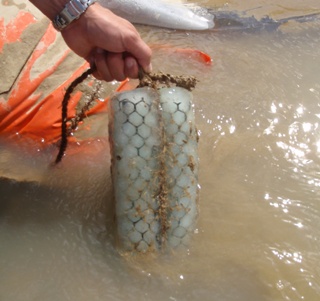Polymers
The use of polymer-based products for water clarification and erosion control on construction sites has begun to garner a great deal of attention. Their effectiveness lies in their ability to enhance coagulation and/or flocculation of fine particles, allowing for more rapid settling in downstream detention practices. Polymers have been used for decades in a variety of industries, and have proven particularly effective for solid-liquid separations.
Polymers that are also marketed as erosion controls function by causing soil particles to bind to one another, making the soil surface becomes resistant to erosive forces. This application has become popular in agriculture for preventing erosion in irrigation furrows, and on construction sites for stabilizing exposed soils.
Poyacrylamide (PAM) is one of the more common polymer flocculants used in products that are currently on the market. Common uses include reduction of agricultural sediment and nutrient loads to natural lakes and ponds, treatment of waste and drinking water, and clarifying effluents in other industries such as pulp and paper, and aquaculture. The anionic (negatively charged) form of PAM is also the most common synthetic polymer used for erosion control in agriculture and construction (1). Chitosan, a biopolymer derived from chitin, the structural element found in the exoskeleton of crustaceans and cell walls of fungi, has also seen widespread use in various water clarification applications.
While several polymer product suppliers have demonstrated effective performance in various applications, questions regarding the human and environmental health risks of polymers have prompted numerous studies in recent years, including consideration by the U.S. Dept. of the Interior Bureau of Reclamation (2) and the U.S. Environmental Protection Agency (3). For more information on the nature, performance, and safety of PAM other polymers, see the report entitled Performance Evaluation of an Anionic Polymer for Treatment of Construction Runoff.
Sources:
1 Sojka, R.E., Entry, J.A., Orts, W.J., Morishita, D.W., Ross, C.W., and D.J. Horne, 2005. Synthetic and bio-polymer use for runoff water quality management in irrigation agriculture. Water Sci Technol 51:107-115.
2 U.S. Environmental Protection Agency, 2009. Development Document for Final Effluent Guidelines and Standards for the Construction and Development Category.
3 U.S. Department of the Interior Bureau of Reclamation, 2007. Using Linear Anionic Polyacrylamide as an Alternative to Reduce Seepage Losses in Water Delivery Canals: Decision Memorandum and Report of Findings.

